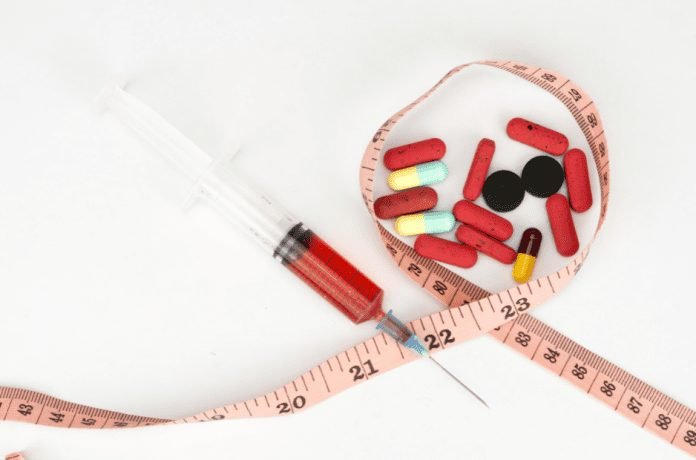Last Updated on March 12, 2024 by admin
There are at least 10,000 different known diseases around the world. Every day around the world, medical professionals work hard to treat, cure and control these.
Most diseases spread when bacteria or viruses are transmitted from one person to another. However, the way that this happens depends a lot on the disease itself. Some, for example, are airborne while others are bloodborne or are spread through physical contact.
Knowing how a disease is spread is vital for protecting a patient’s friends and family and the medical professionals treating them. It can also protect people working in other at-risk industries. So what are bloodborne pathogens and how do they spread?
Read on to find out about some of the most common bloodborne pathogens and how bloodborne pathogens training can help to contain them.
Table of Contents
What are Bloodborne Pathogens?
Pathogens are infectious microorganisms that transmit diseases from one person to another. Bloodborne pathogens, in particular, are transmitted through the sharing of blood and other bodily fluids. These include:
- Vaginal secretions
- Semen
- Saliva
- Peritoneal fluid
- Synovial fluid
- Amniotic fluid
- Cerebrospinal fluid
- Pleural fluid
Coming into contact risks spreading it. Commonly this can happen during sexual contact, in childbirth, and through the sharing of contaminated sharp objects. However, bloodborne pathogens can also spread through damaged or broken skin.
A number of common diseases are transmitted by bloodborne pathogens. Let’s take a closer look at some of these.
Human Immunodeficiency Virus (HIV)
HIV is possibly the most well-known bloodborne disease. It is commonly transmitted during sexual contact and childbirth. HIV attacks the body’s immune system, leaving the patient vulnerable to other common infections.
Without treatment, HIV can develop into AIDS (acquired immunodeficiency syndrome.) However, it is important that note that AIDS is not a bloodborne pathogen.
There is currently no cure for HIV. That said, modern medicine now means that it is possible to live a long and healthy life with HIV provided you receive treatment.
In fact, some patients’ viral load is now so low that they are classified as “untransmittable”. This means that the chances of them spreading the disease are extremely low.
Hepatitis B Virus (HBV)
Hepatitis B is a disease that affects your liver. Typically, adult patients can live comfortably for a few months before symptoms become obvious. However, it is important to get treatment for hepatitis B to prevent long-term liver damage.
The range of treatments for hepatitis B depends a lot on how long you have had it.
Emergency treatments can prevent the infection from taking hold if you have them shortly after contact. Similarly, you can relieve symptoms and fight off the disease with antibiotics if you have had it for less than six months.
After six months, however, patients develop chronic hepatitis B. This is a life-long condition, which requires careful treatment to prevent liver damage.
Hepatitis C Virus (HCV)
Hepatitis C also affects the liver and can take a long time to present its symptoms in patients. If left untreated it can result in liver cirrhosis and can be life-threatening.
However, more than 90% of patients with hepatitis C can be cured with the right treatment. Generally, this requires an intensive course of treatments over a number of weeks. Often patients will receive a combination of weekly injections and tablet medication. Moreover, you can check this link for details on hcv antibody test.
Malaria
Malaria is a type of tropical disease, which is often spread in blood by mosquitoes but can be spread through other bodily fluids. This serious disease requires quick diagnosis and treatment otherwise it can be fatal.
Malaria can come from five types of plasmodia parasites. When these enter the bloodstream, they start to damage the red blood cells within it.
To begin with, this can cause anemia, vomiting, and diarrhea. However, as the disease develops it can lead to organ failure, seizures, comas, and even death.
Antimalarial medication can be used to treat malaria. The length of treatment will depend a lot on the severity of your case and the type of malaria you have.
Syphilis
Like a lot of other sexually transmitted infections, syphilis is most commonly spread during sexual intercourse and the exchange of bodily fluids. Condoms and other barrier methods of contraception can help to prevent syphilis. However, if your genitals come into contact with sores in other unprotected areas then this can transmit it.
Having syphilis can be uncomfortable as it can cause ulcers and rashes on the body. You may also experience headaches, joint pain, fevers, or exhaustion.
Fortunately, it is possible to treat syphilis with a treatment of antibiotic injections or tablets. Treatment usually lasts four weeks.
If left untreated, however, syphilis can spread over the course of years. This can affect the brain and other areas of the body, resulting in long-term complications.
Brucellosis
Brucellosis is another common bloodborne pathogen. However, unlike a lot of other diseases, transmission from one person to another is very rare.
Generally, people catch brucellosis from ingesting unpasteurized milk or cheese. As the disease is common in farmyard animals, you can also catch it from contact with their fluid or from eating uncooked meat.
You can treat and cure brucellosis using a six-week course of antibiotics.
Why is it Important to Control Bloodborne Pathogens?
As you can see, a lot of bloodborne pathogens can cause serious diseases. Most of these come with incredibly uncomfortable and distressing symptoms, which can take weeks or months to recover from.
In some cases, such as HIV and hepatitis B, these pathogens cause life-long illnesses. These require lengthy (and sometimes expensive) treatments and can leave patients vulnerable. Because of this, it is incredibly important for medical services to have protocols in place to control them.
As with many diseases, prevention is much easier than cure.
On top of this, some treatments for bloodborne pathogens are most effective when given immediately. For example, it is possible to prevent the hepatitis C infection from developing altogether with emergency treatment.
However, you do not just have to think about yourself. You also have a responsibility to protect staff, patients, and other clients.
Without the proper safety measures in place, you could contribute to the spread of an infectious disease. If this transmits to a patient or customer because of your negligence, you could be liable for a very big lawsuit.
All medical services and people in other at-risk industries should have a bloodborne pathogen prevention plan. They should also have a plan in place for people who have come into contact with bloodborne pathogens.
In order to provide this, you need to have specific knowledge of bloodborne pathogens and how they spread. This is where specialist medical training can help!
How Can Bloodborne Pathogens Training Help?
Bloodborne pathogens training is essential for any medical staff who have regular contact with patients. It can also be helpful for people who work in areas that might have an increased risk of exposure to pathogens. This includes laboratory workers, piercing or tattoo artists, and anyone working in primary care.
A comprehensive bloodborne pathogens training course will cover:
- Definitions of bloodborne pathogens and information about common bloodborne diseases
- Information about exactly how these pathogens spread and how to prevent this
- Comparisons of common bloodborne pathogen infections
- An outline of the concepts of Universal and Standard Precautions
- Information about the Occupational Safety and Health Administration’s (OSHA) bloodborne pathogen standards
- A look at the role of personal protective equipment in containing bloodborne pathogens
- A look at how to implement preventative measures in a working environment
- Information on what to do if someone is exposed to a bloodborne pathogen in your place of work
They should also provide medical certifications upon the completion of a course.
This can help those at risk plan ways to prevent the spread of infectious pathogens. This might include introducing proper cleaning procedures and the use of protective equipment when working.
It is also important for anyone at risk to have plans in place if they are exposed to a pathogen. If you are exposed to a bloodborne pathogen, it is important to seek medical support immediately. This can help to contain the spread of the disease within your body and to fight the infection itself.
Protect Patients and Staff Today
As you can see, when it comes to containing diseases, bloodborne pathogens training is essential. This helps to protect people against a number of common diseases. With proper safety measures in place, medical professionals can focus on giving their patients the best possible treatment.
So what are you waiting for? To find out more about organizing bloodborne pathogens training for your team visit https://www.hipaaexams.com/.
Apart from that, if you are interested to know about Facts of the SARS Virus then visit our Health category.






















